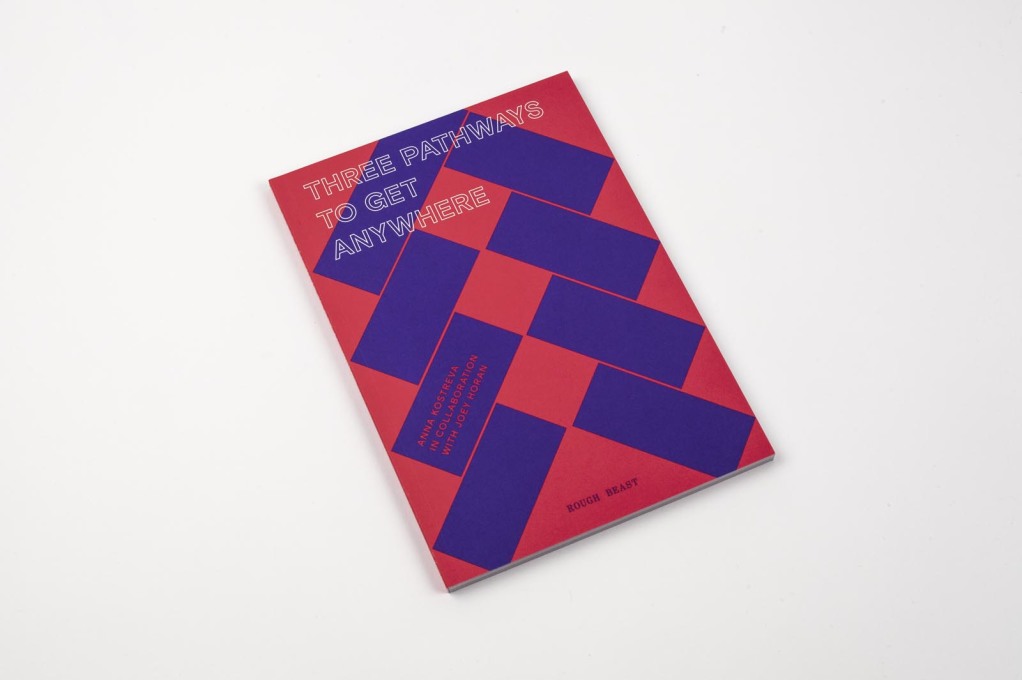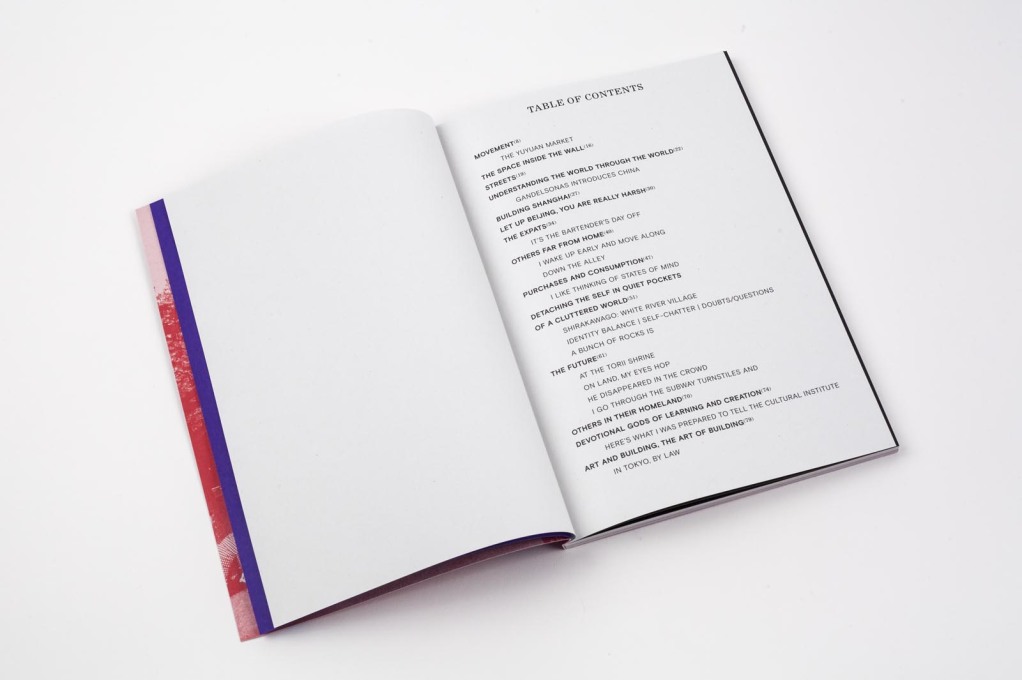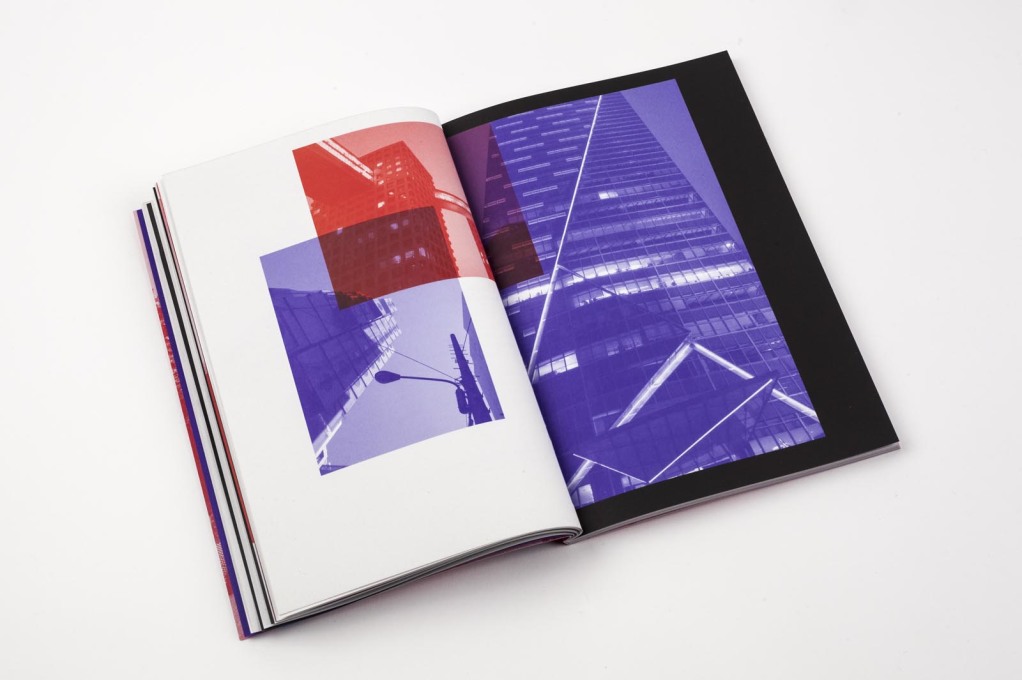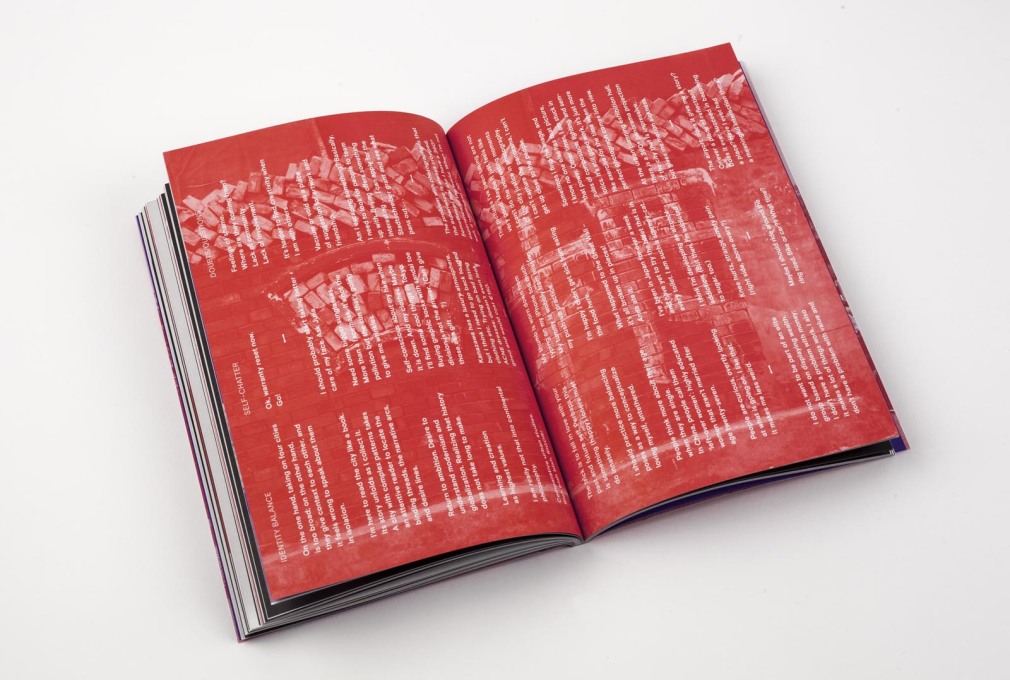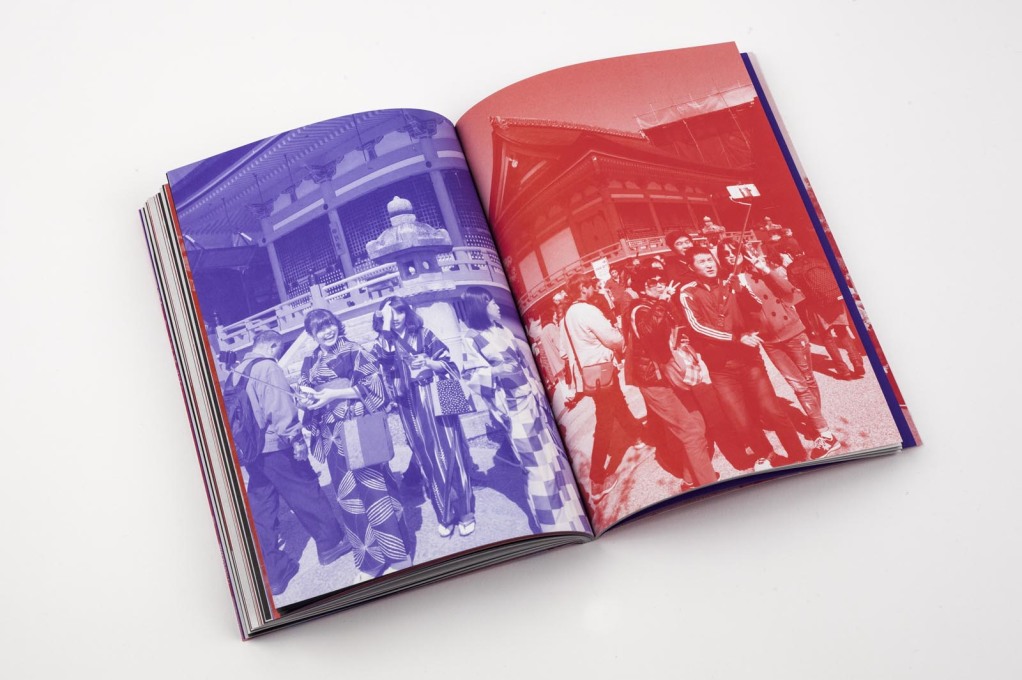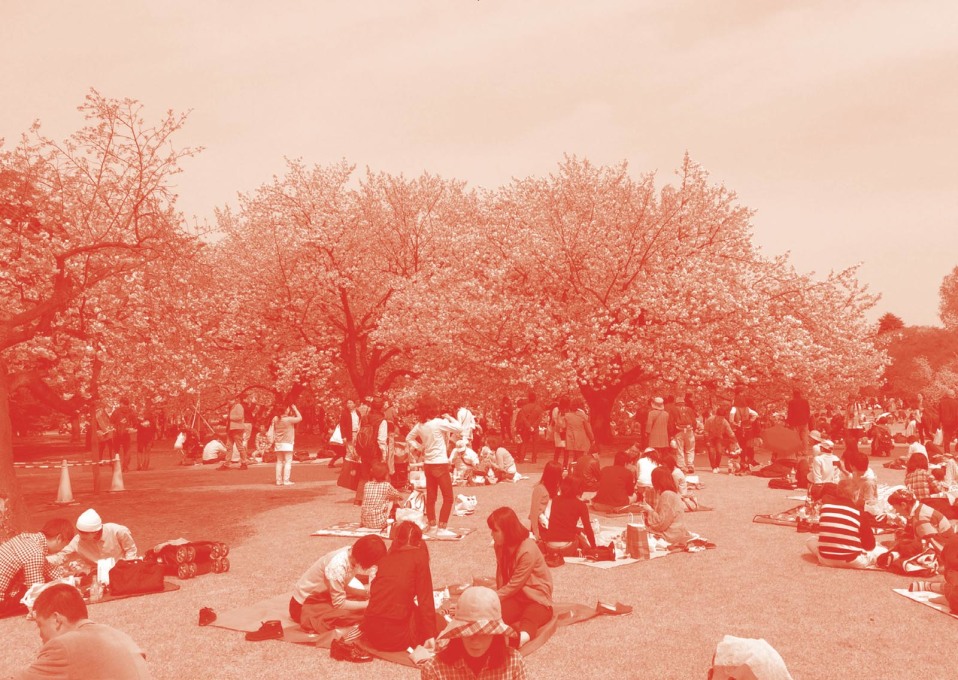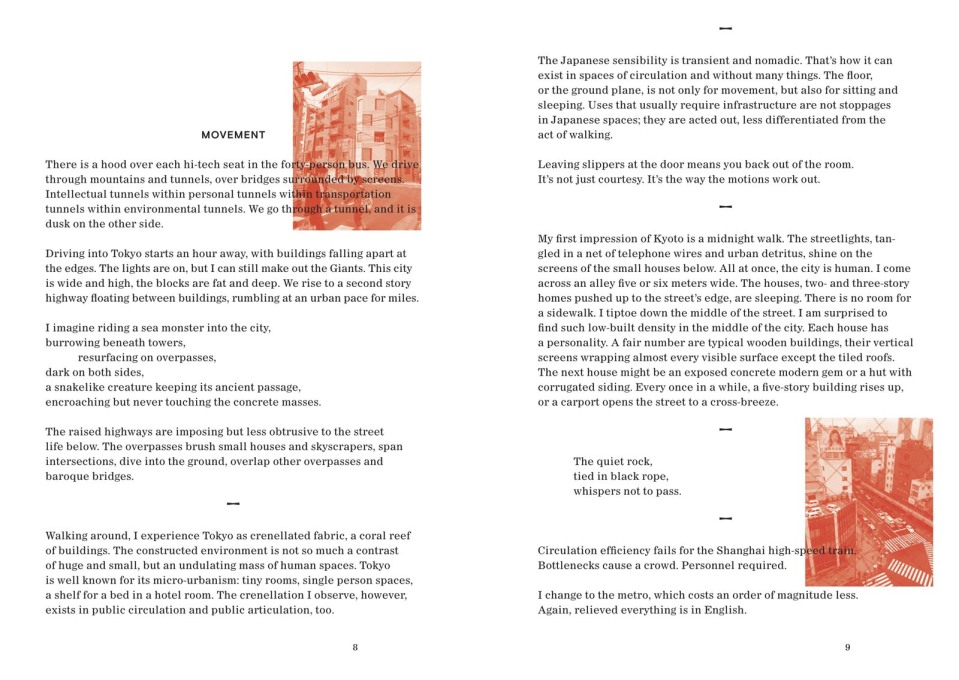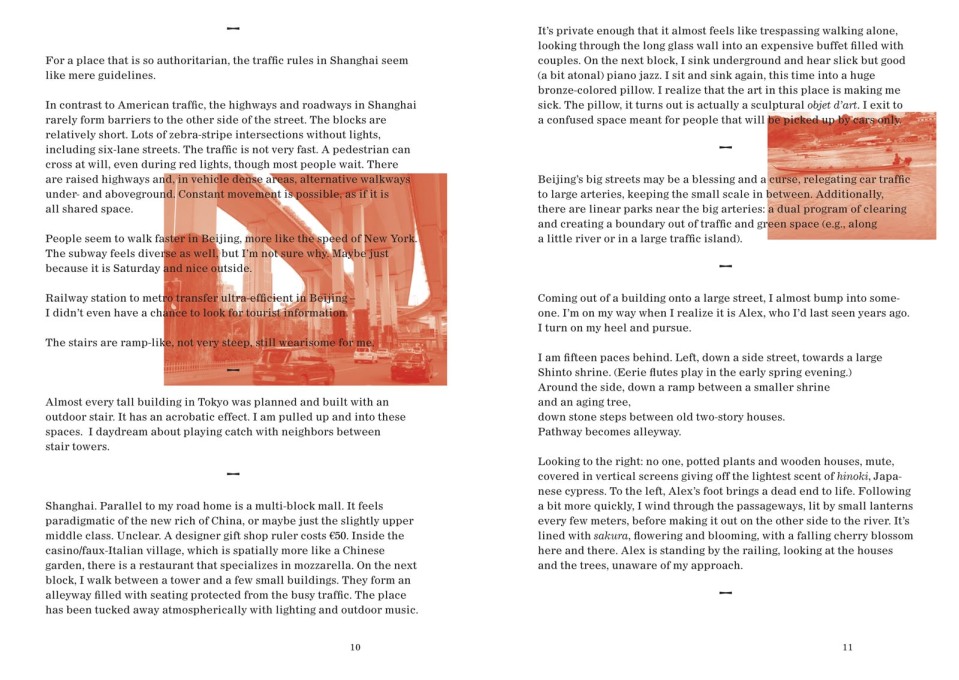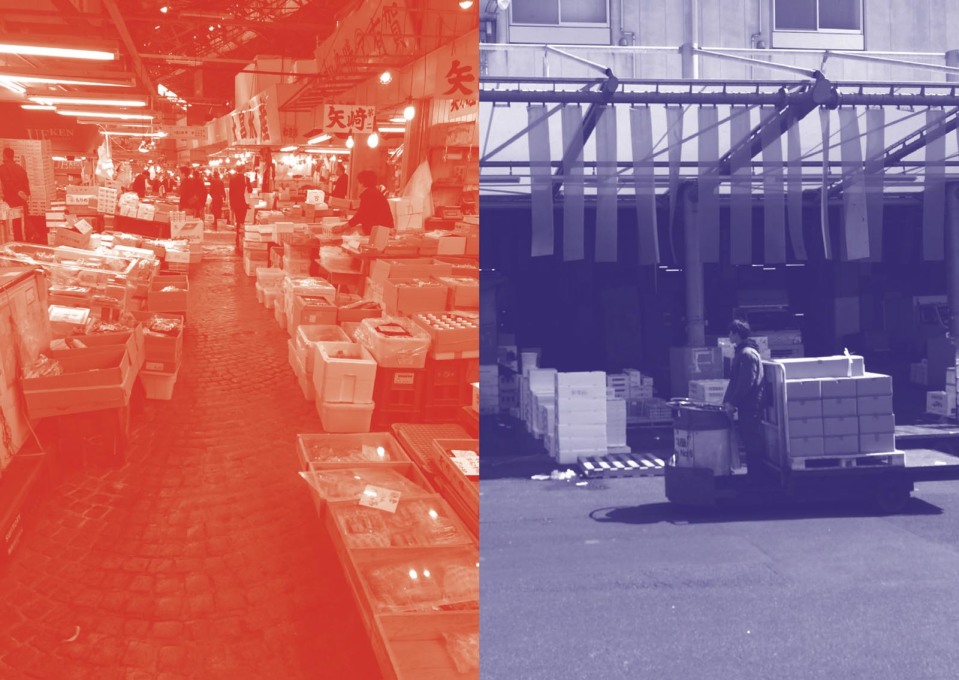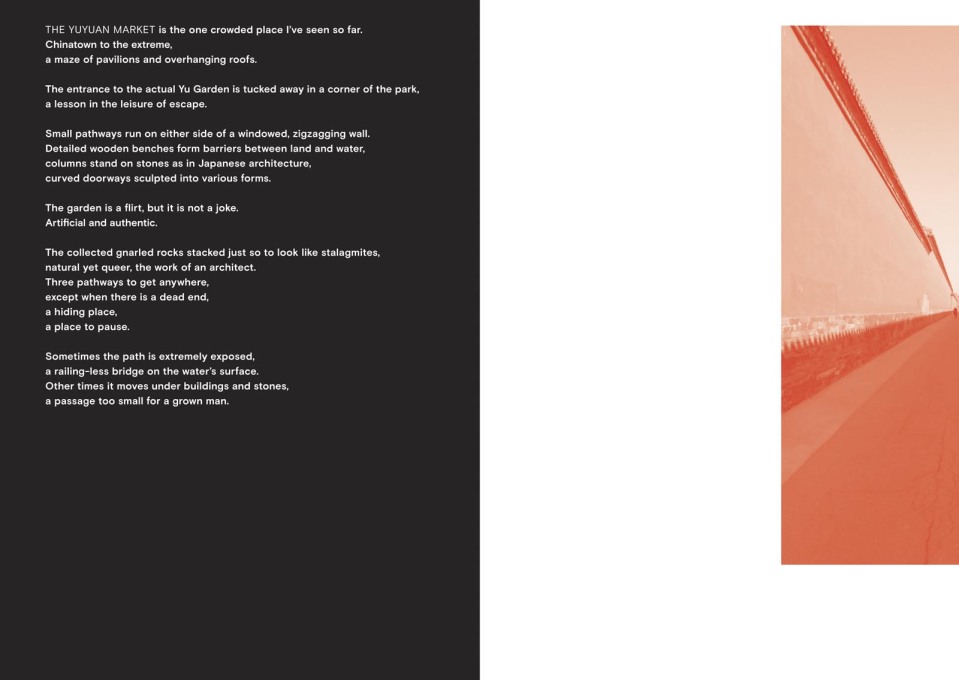In a new book of experimental non-fiction, architect and writer Anna Kostreva has collaborated with editor Joey Horan to produce a kind of travelogue-cum-dérive – a collage of her own experience as a contemporary flâneur around the cities of East Asia. Fiona Shipwright takes Three Pathways to Get Anywhere and ends up – positively – at a dead end.
There’s a line in Three Pathways to Get Anywhere, a new book by architect and writer Anna Kostreva, in which the author describes the Zen school of Buddhism as being “radical” on account of “valuing individual experience” over that resulting from a shared, collective adherence to a doctrine.
That very Zen-like individual experience – albeit one charged more with escapism than self-reflection – leads the narrative in the book itself, recently published by Rough Beast and produced in collaboration with editor Joey Horan, which chronicles six weeks of travel through China, Japan, and Singapore in March and April 2015. Presented as “a work of experimental non-fiction on travel and cities in East Asia” it traces a path through a constellation of urban environments. This is exactly the kind of experience that the modern day flâneur is encouraged to upload and “share”, continually broadcasting an edited version of their personal here-and-now. But a paradox ensues. For such experience has little hope of remaining “individual” when it is prized less for its value to a singular observer but more to attract the attention of multiple, real-time external observers. As the narrator laments at one point: “the problem with photography is the experience is always cropped”.
It is some relief then, away from the rapid-fire environment of infinite scroll-land, to find Konstreva and Horan’s work plays not only with the cropped image but also with all that lies beyond its frame. In doing so the author effectively describes the act of travel through differing aspect ratios – from a top down, widescreen view of the space between Beijing’s vast ring road infrastructure to the cramped framing of the sky resulting from looking up in a backstreet courtyard, in a space created by accident rather than design.
Fluctuations in speed and velocity also occur throughout the book: the lone walker seeking to lose themselves in the fabric of the city gives way to the frantic energy of selfie-stick wielding arms that extend and gesticulate wildly from a crowd of tourists. An airport bus hurtles down the motorway towards a city centre whilst a child’s electric scooter takes a more meandering pace along a pavement.
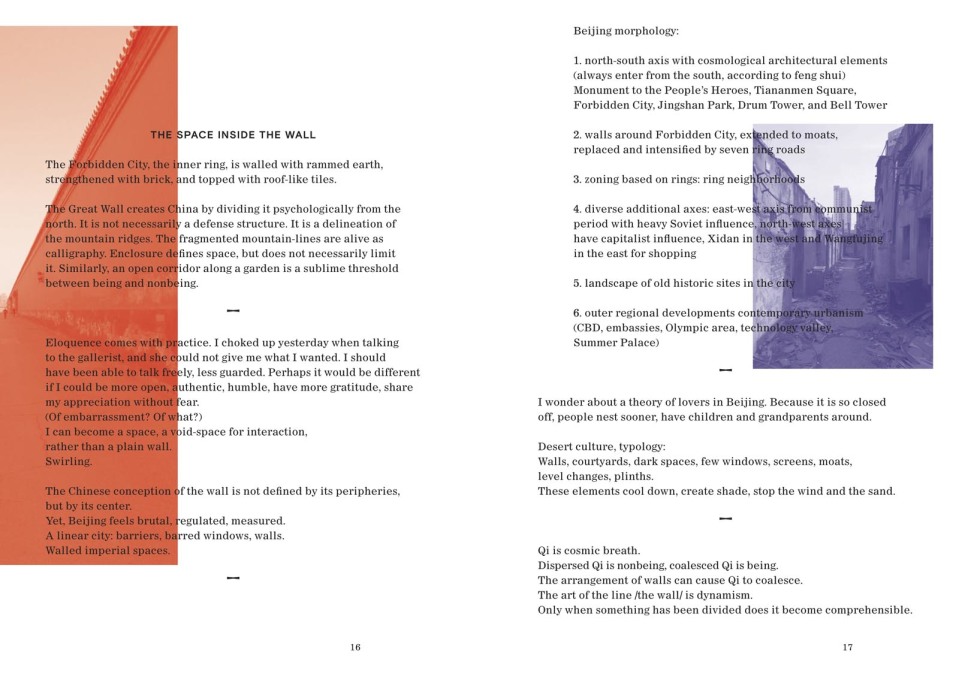
As well as speed, the experience of the duration of time also plays an important role, particularly with regard to the way the built environment is treated. Kostreva’s exploration of urban spaces tends to be human-focused, contrasting the “slowness” of construction with the swift manner in which architecture is adopted, appropriated and adapted by its inhabitants. It is these latter processes that seem to most fascinate the author, for whom: “architecture is not the catalyst for this urban activity, it follows naturally from use”.
For this reason, whilst it’s largely a background presence, visually chopped up and layered, architecture is perhaps the most important character in Three Pathways to Get Anywhere. The fragmented, fleeting nature of foreground events require architecture as a means of context upon which to hang experience, a point from which to remember. For example, one of the texts, “Movement”, conjures the sense of dissolution traditionally associated with the classic Augé-esque non-place, complete with reference to spaces of transit, yet gives just enough detail to turn them into actual, lived, active places.
Kostreva’s use of both top-down and bottom-up perspectives is particularly interesting given that most recently it is the view from a great height which has come to be privileged in the context of “UrbEx” (urban exploration) – usually resulting from spectacle-seeking attempts at breaking in and trespassing. The “conquering” of urban sites, of the ticking-off of sights and providing (usually visual) documentation of missions accomplished (nearly always with the protagonist somewhere in the frame) seems to be most concerned with proving: “I was here” (often whilst they’re still there). The accelerated nature of this approach is affecting our experience and understanding of places, somehow depriving us of what lies beyond the frame. Whilst it may provide a treasure-trove of archive material, it doesn’t communicate much about the spaces themselves – just that someone went there. Somewhere along the way, the dérive has, well, gone off track.
Three Pathways to Get Anywhere picks up this thread, aptly alluding not only to the global locale we now inhabit but also one of its main drawbacks: not-so-individual experience. And somewhere along the way the conflicted desires of the lone walker, moving against the backdrop of the city is revealed: “I don’t want to live anywhere, I want to exist everywhere, and experience many things.” To satisfy this “I”, the self, seems to require the dissolution of that very same self. On this point the text from which the book’s title is borrowed offers some clues:
“Three pathways to get anywhere
except when there is a dead end,
a hiding place
a place to pause.”
Perhaps this is really why we travel: not to move at all, but to pause between movement; not seeking to get anywhere in fact, but to deliberately seek out a dead end instead.
Anna Kostreva is an American architect, artist and researcher based in Berlin. She is a graduate of the Cooper Union School of Architecture and recipient of a 2009 Fulbright Grant for research on post-apartheid urbanism in Johannesburg, South Africa. In 2014, she published her first book, Berlin: A Morphology of Walls. www.annakostreva.org
Three Pathways to Get Anywhere (Except When There Is A Dead End) by Anna Kostreva in collaboration with Joey Horan, published by Rough Beast, 2016.




